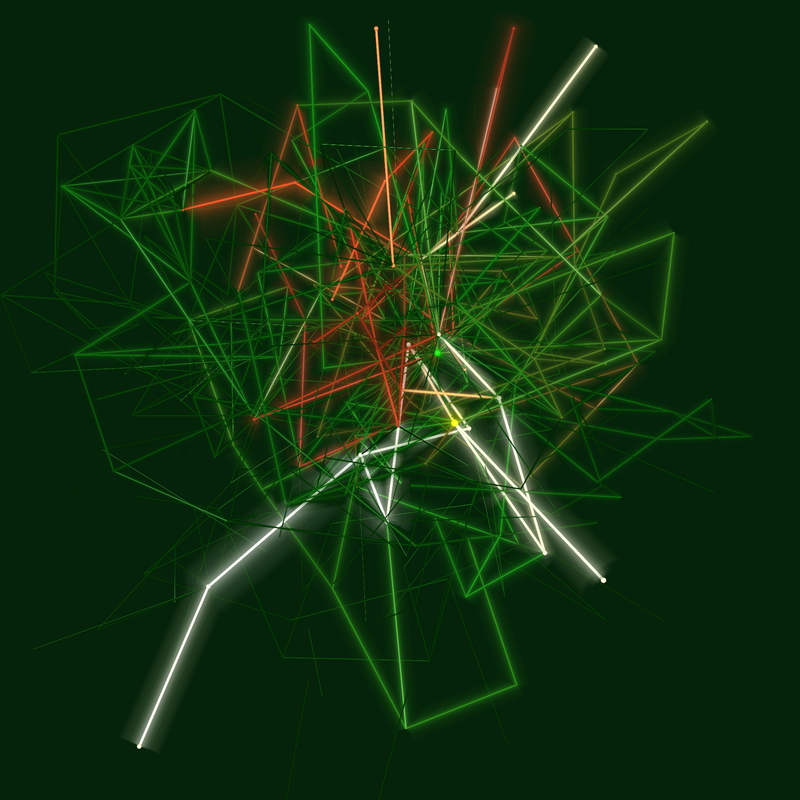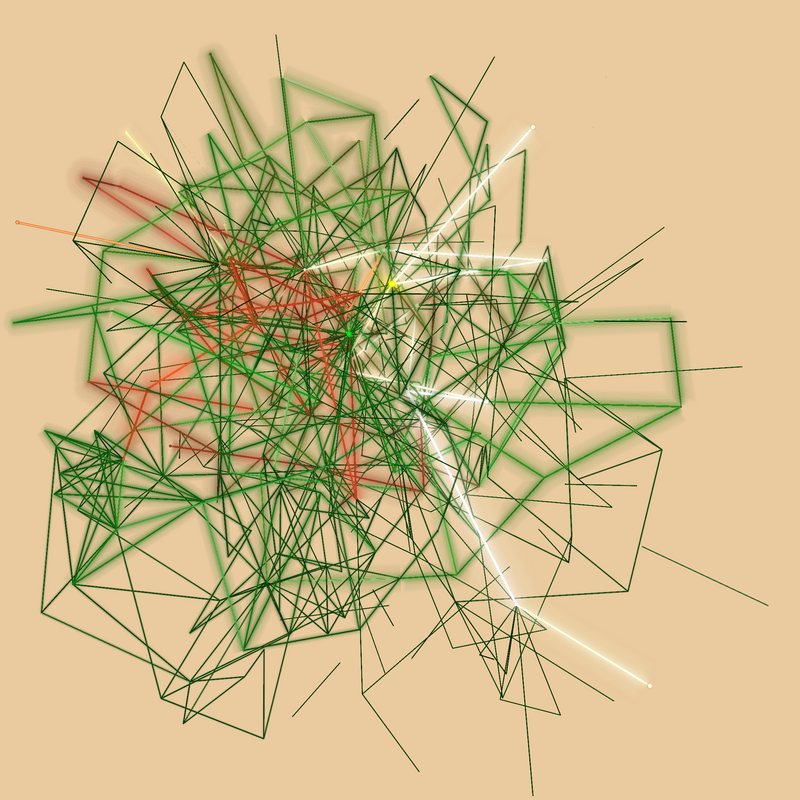Although the topological organization of individual reactions into metabolic networks was well understood, there were still many questions about the principles that govern their global functionality. To capture the complexity and diversity of observed flow patterns, Barabási wanted to develop a visual vocabulary that would describe the phenomena. But he didn’t need the imagery to be explicit; its purpose was to be evocative, not explanatory. The images he and his team came up with were designed to be potential cover art, not diagrams of the research, for the issue of Nature in which his paper was being published. By color encoding the predicted
flux—or flow—of each reaction, the images illuminate the diversity of the flow patterns. The most dominant fluxes are represented by broad white lines. These lightbeams clearly stand out from the rest. The combination of colored links captures the pulse of the network. By illuminating the existence of a powerful flux backbone within the context of numerous low-flux links, the image illustrates how different types of flow inform a network’s purpose and function—and how unequal flow can be in any network.











Contact
Social